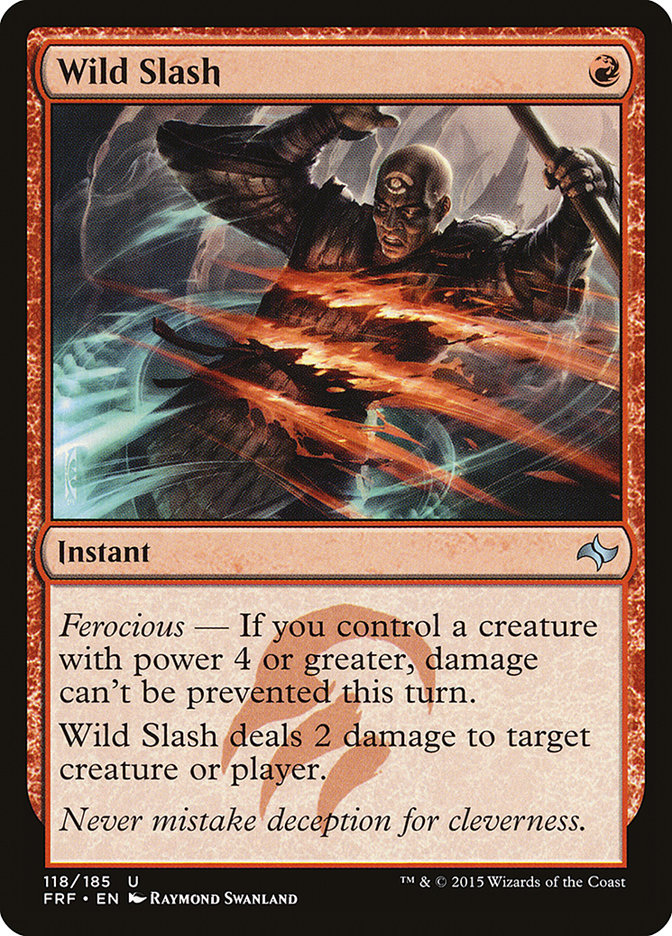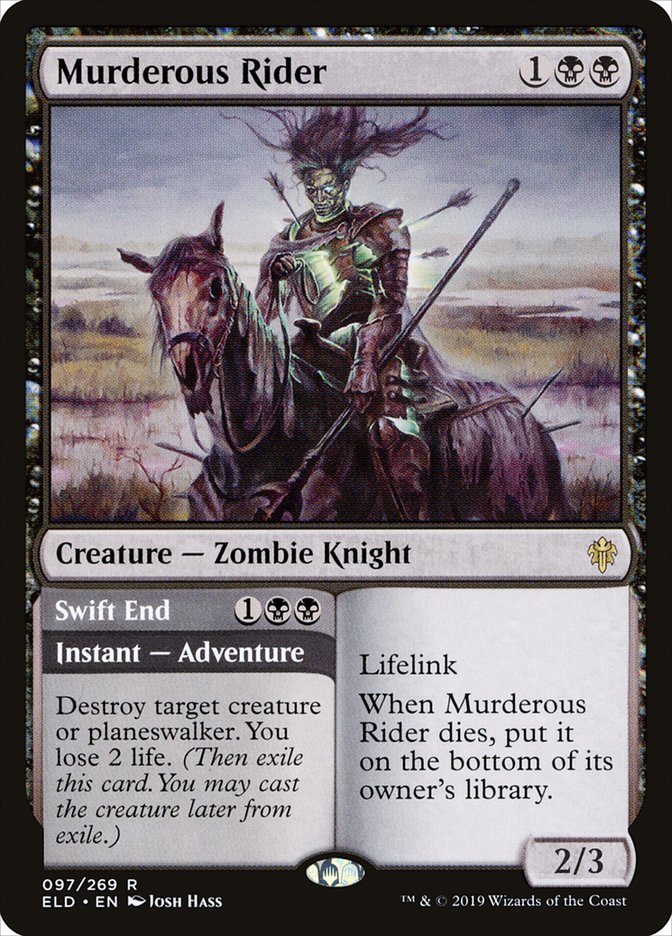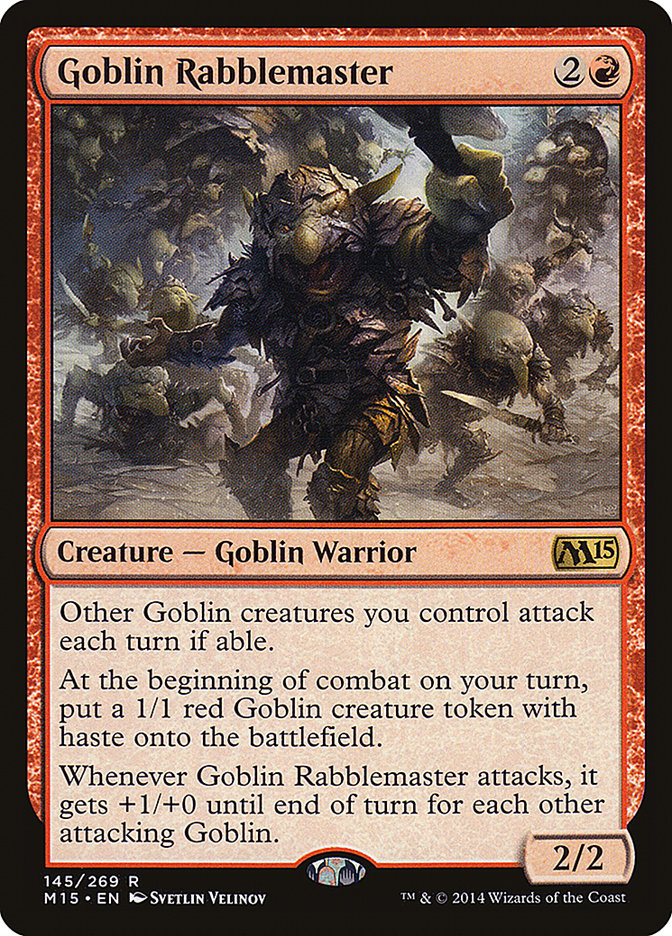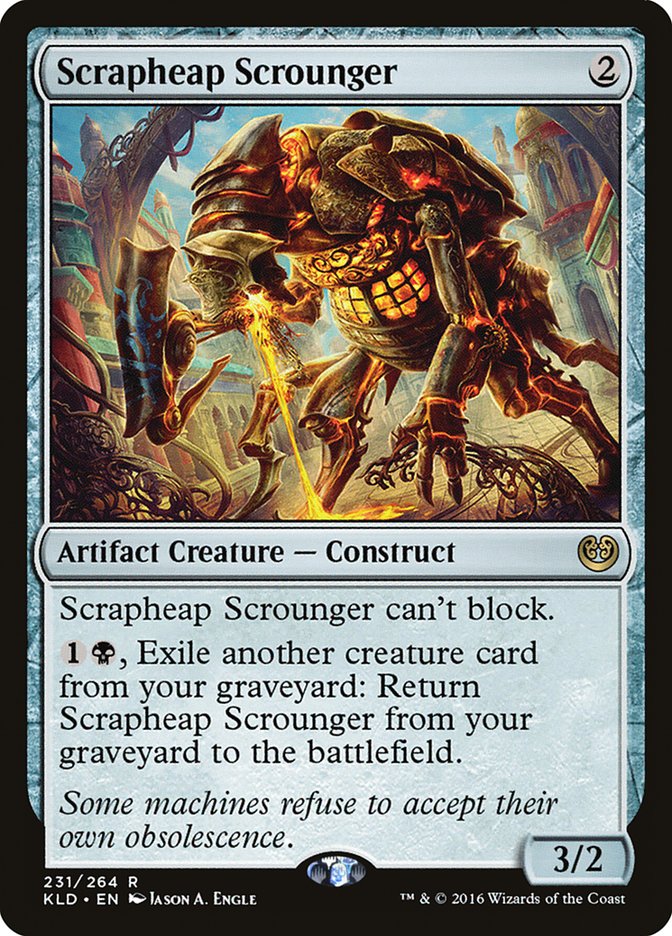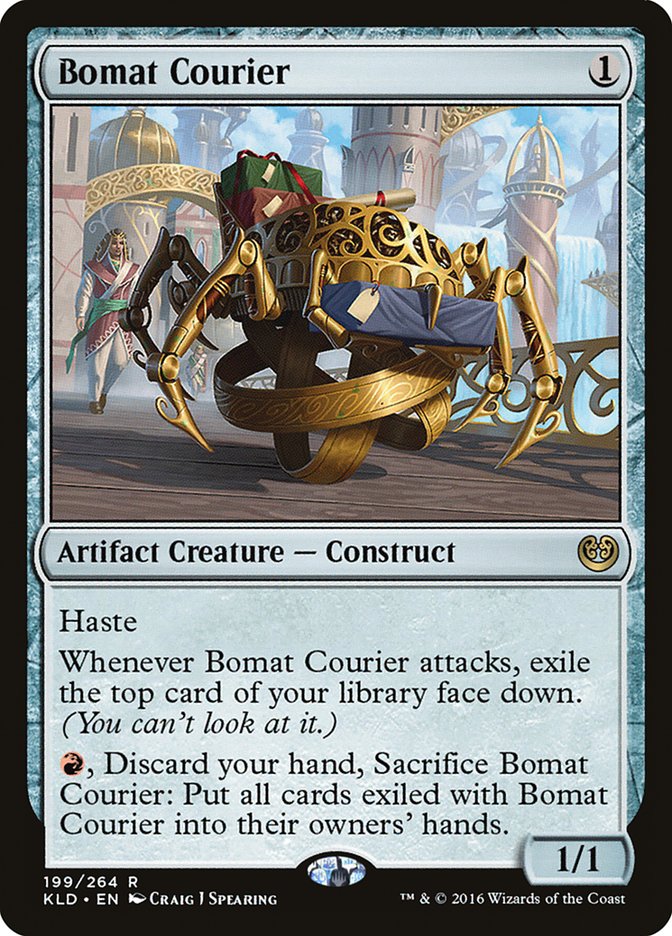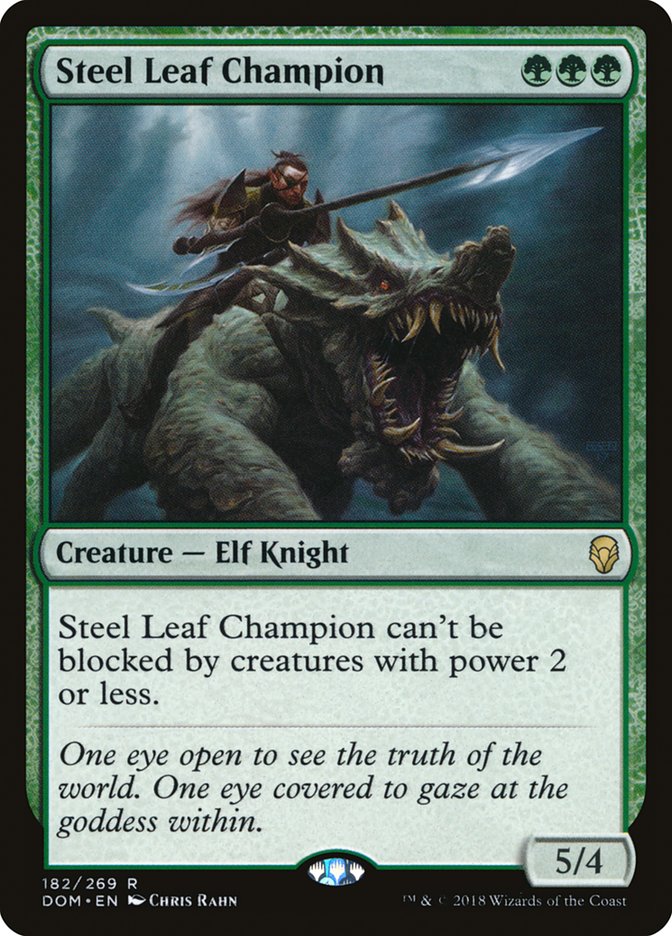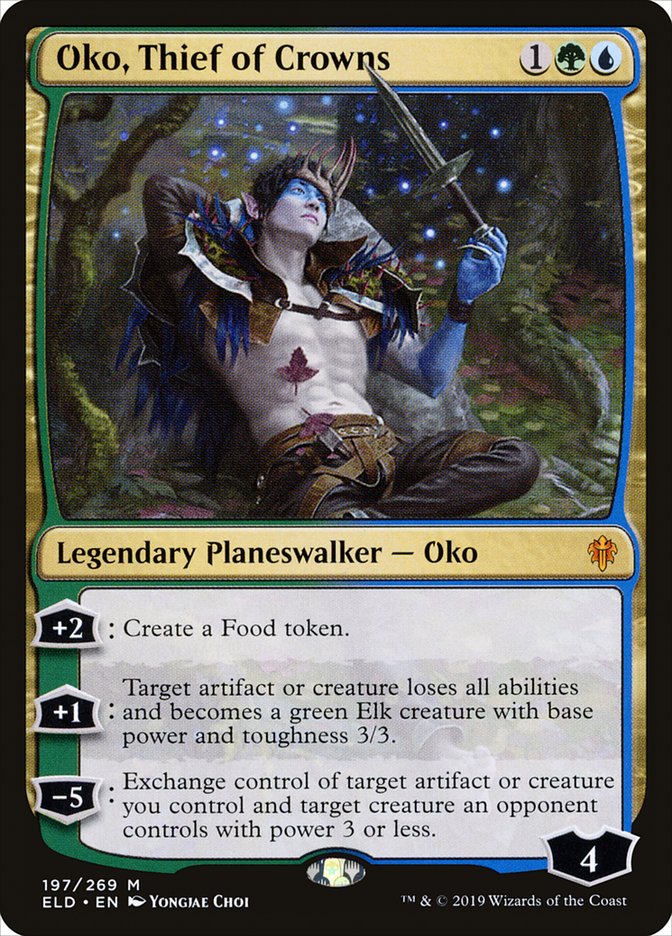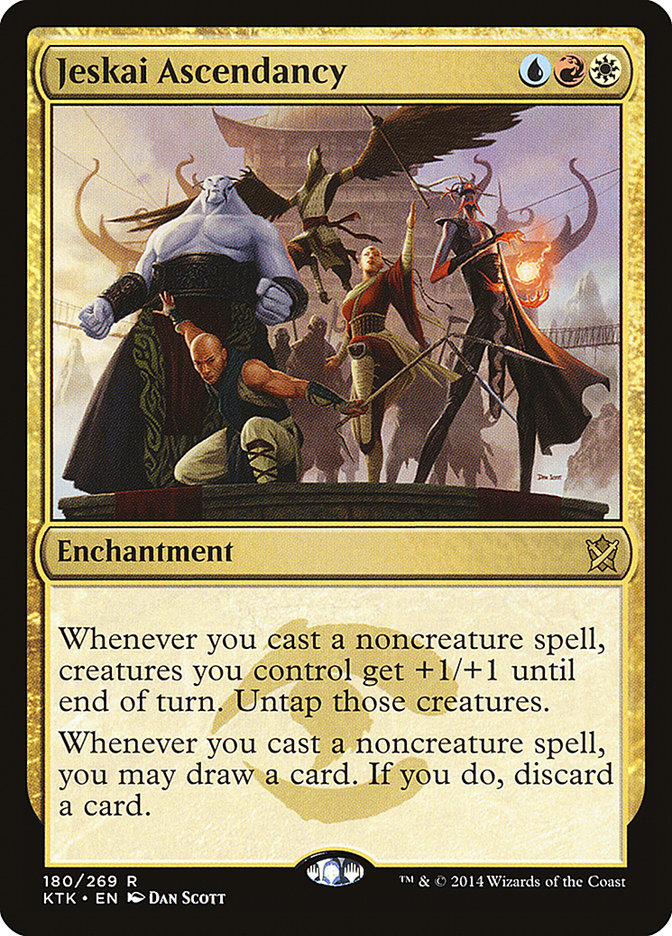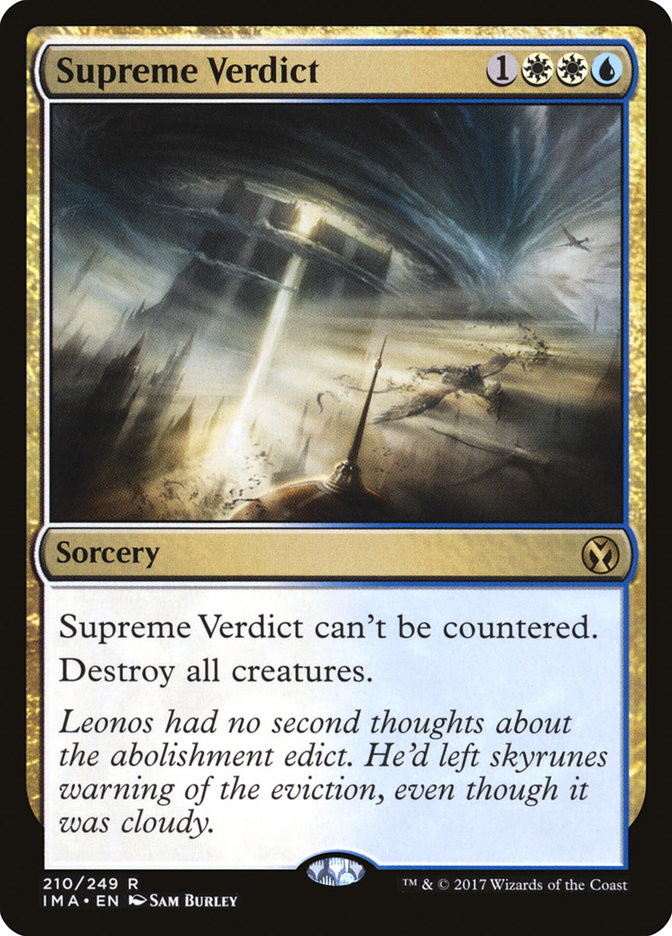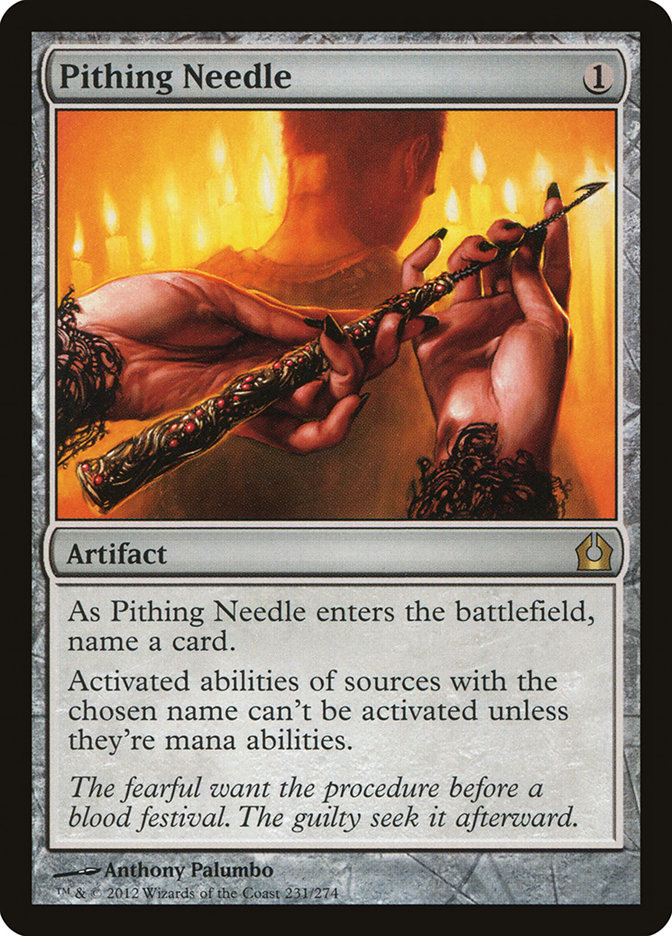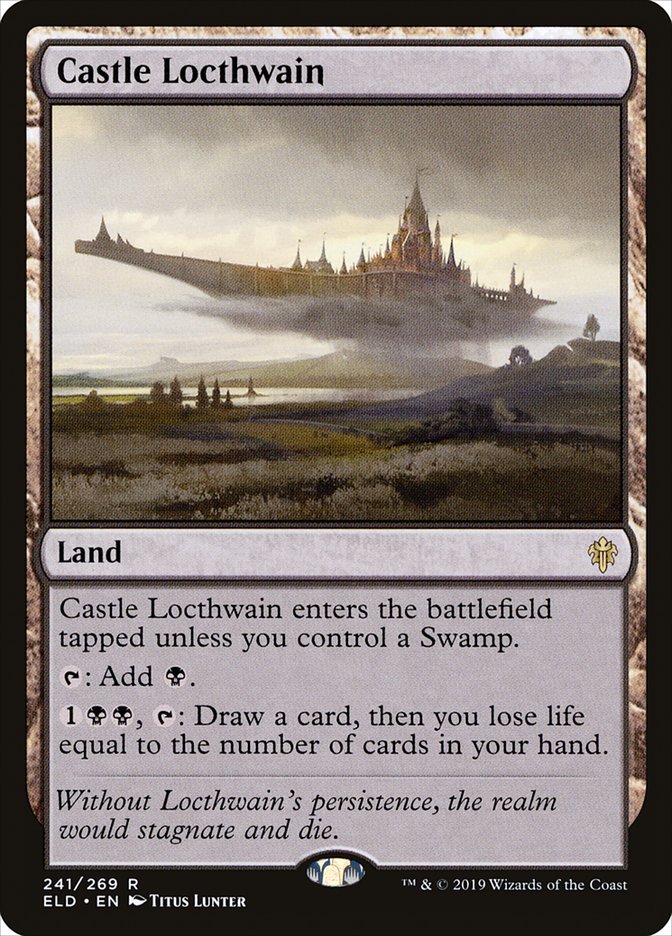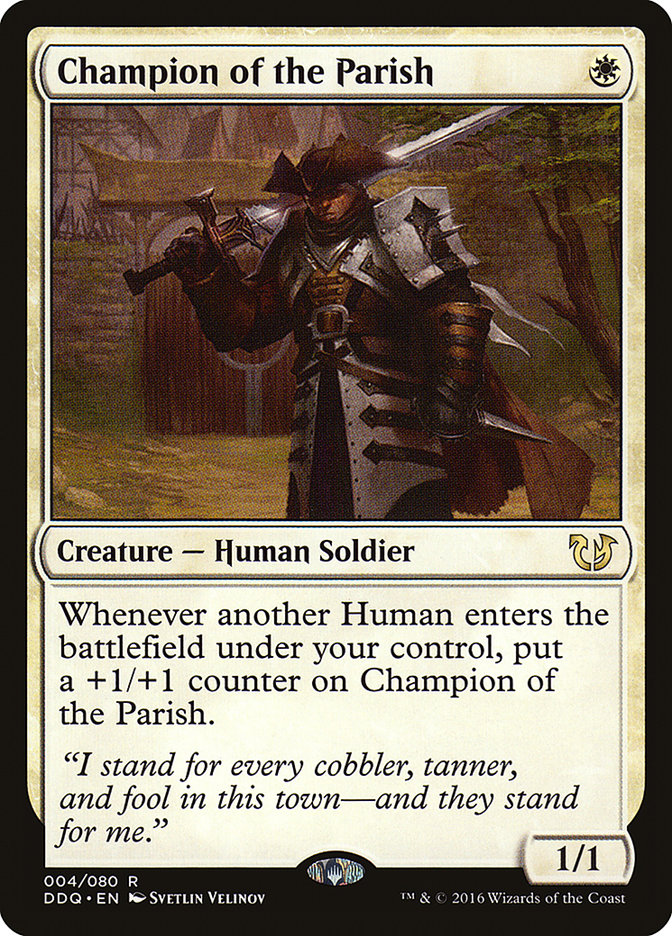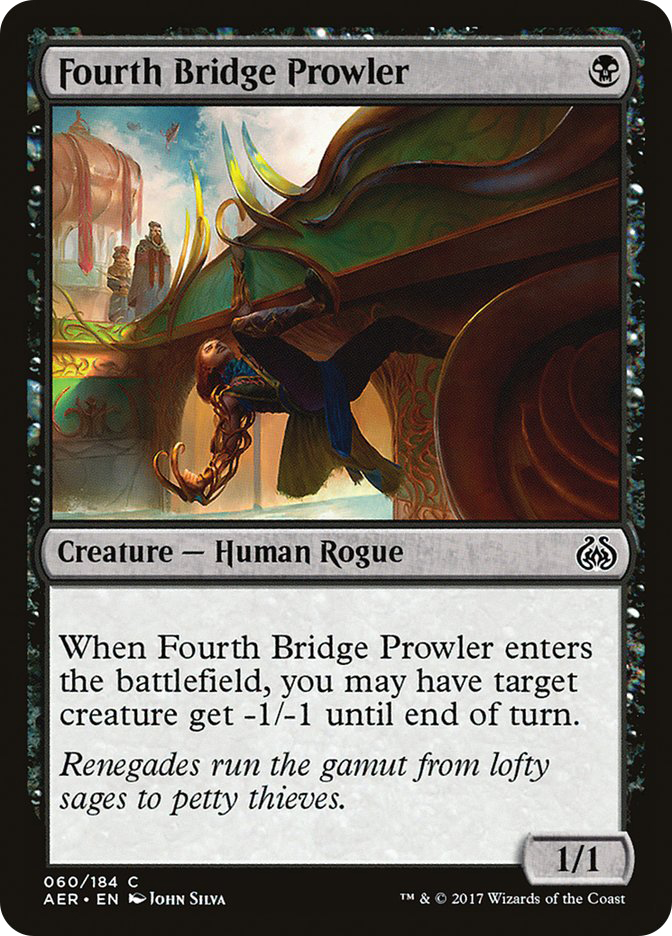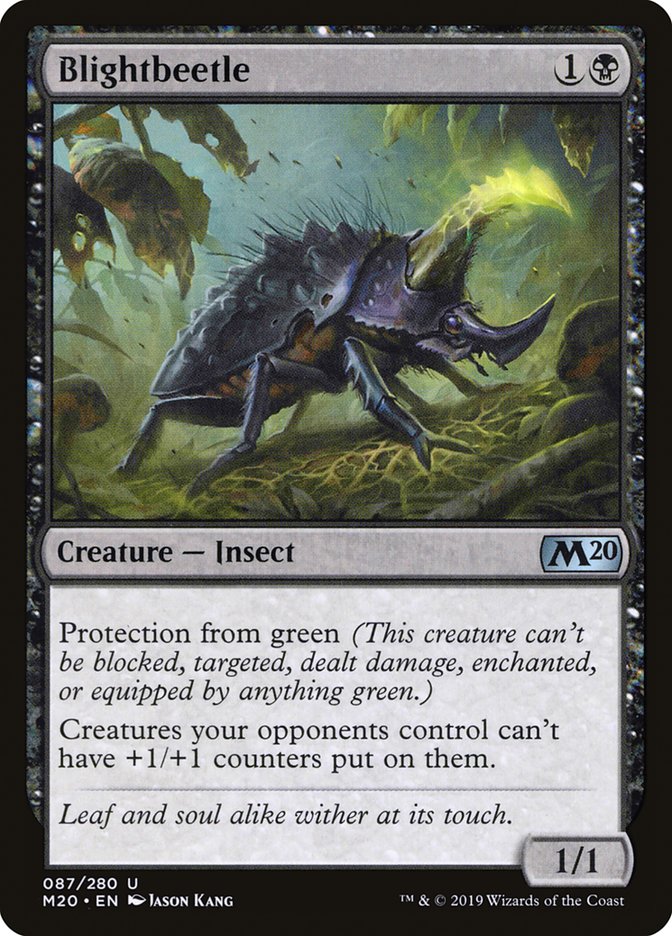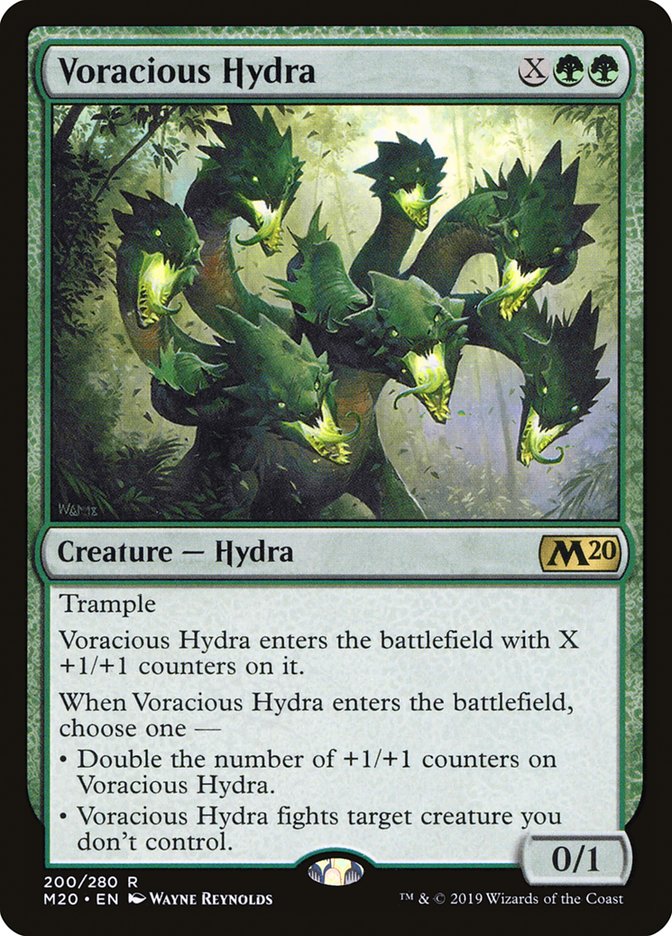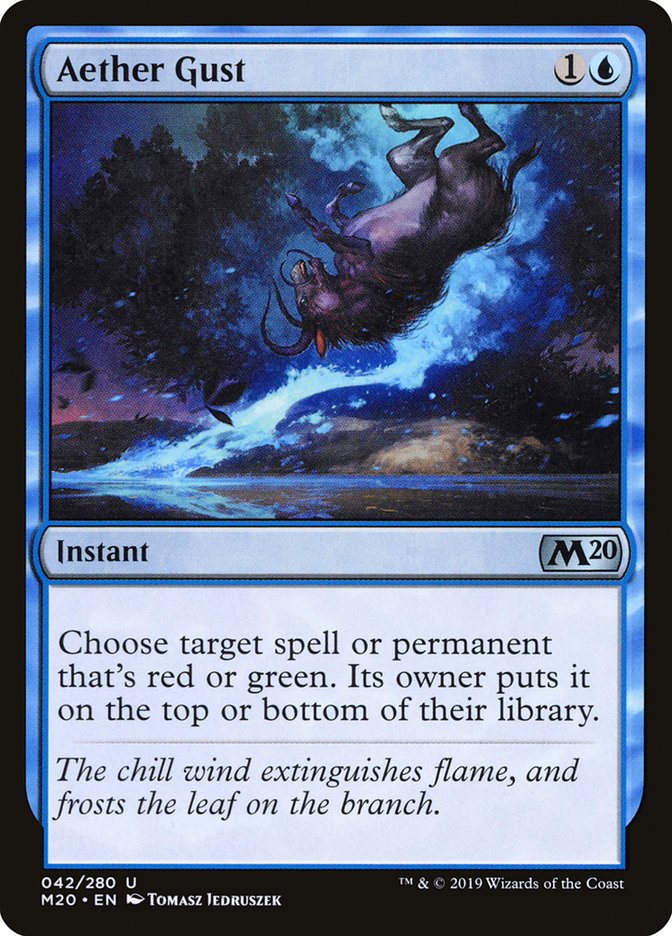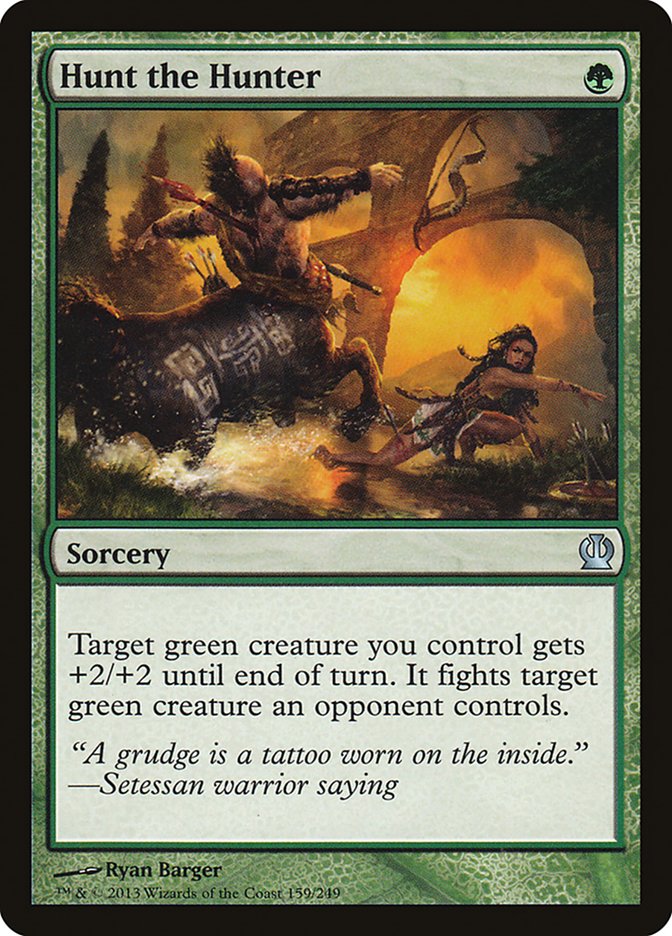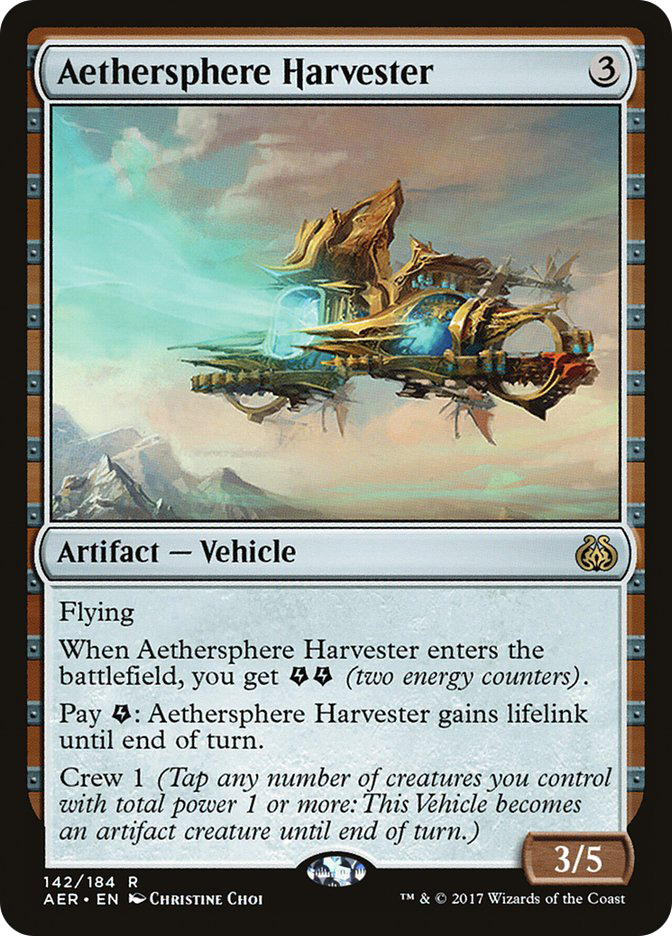A fairly common feeling among Pioneer players at SCG CON was that the format was extremely play-draw dependent. I absolutely agree, and I think, given the construction of the Pioneer format, this won’t change any time soon. You would have to ban enough cards to fundamentally redesign the last seven years of Magic to “fix” this.
Playing on the Draw
Pioneer is a fast format, but it isn’t inherently fast the way Modern is littered with Turn 3 kills. What pushed the format down this initiative-driven road?
We have spent these last seven Pioneer years in Standard formats defined by similar answer-and-threat power scales.
Answers are fairly divided between cheap stuff like Wild Slash that doesn’t scale up, and expensive answers like Murderous Rider designed to answer five-drops.
The best threats were also always good against removal. They either produce residual value or just completely ignore some or all answers.
This was always counterbalanced by scale. These best threats were always distributed up a curve, so you had to play some two-drops, some three-drops, and some five-drops, and games came down to alignment of this sliding threat scale varying game to game. Answers, while bad, would play a different role depending on how you planned to leverage the threats you drew versus what they had.
But when you mash seven of those formats together, you can just stack all the best threats at the best rate together and get decks like this. Stuff like Once Upon a Time and Smuggler’s Copter makes this more consistent to egregious lengths, but the core issue is that there’s always another Standard-defining low-drop in line to make a consistent proactive deck. And the London mulligan; that one is always an issue when you’re talking overly consistent draws.
These threats all battle fine against the threats for two mana above their rate; they kill too fast to really go over the top of them; they shrug off smaller removal and out-rate bigger removal. Being reactive is a losing battle.
In addition to some of the cascading effects of the early threats, a lot of them literally don’t let you play defensive roles. “Scrapheap Scrounger can’t block” is the peak line of text to use as an example, but there’s a ton of other stuff that adds up. Vehicles don’t actually add a blocker to the battlefield, Ghor-Clan Rampager just exists, and killing a blocker generates damage value even if the exchange puts you down cards.
So in Pioneer you are almost always going to build decks that are proactive, draw hands that are always similarly proactive, and play cards that are bad on defense and resilient to answers. On the play, you will be ahead in almost the exact same ways all the time. On the draw, you will be behind in the exact same ways. Breaking these patterns is the key to Pioneer. On the draw you need ways to swing initiative, and on the play you want ways to further bury your opponent.
Combo and control are two archetypes that can break up these patterns since they aren’t as dependent on deploying proactive cards on curve, but neither is in a great place in Pioneer.
Jeskai Ascendancy and Aetherworks Marvel are fairly powerful combo options, but the answers to those things are just way too efficient. Thoughtseize and Stubborn Denial are rough times. Combo also doesn’t have the same redundancy as normal decks without Modern-power-level cantrips or fast mana, and it often isn’t even faster than the beatdown drops.
Control suffers a similar fate. The answers aren’t reliable against the threat spread, and they aren’t layered in power level the way the threats are either.
That said, these are also the archetypes that take more effort to construct and we might be missing a crucial trick or two in these open weeks of the format. Here are the things I found notable coming out of this weekend for control and combo.
I was somewhat impressed with Peter Ingram application of Pithing Needle in Azorius Control as an answer that mitigates many of the things that evade Supreme Verdict. Oko, Thief of Crowns and Smuggler’s Copter don’t leave a ton of value behind if you immediately Pithing Needle them, which makes the card a reasonable trade that potentially scales with their draws the rest of the game.
Creatures (8)
Planeswalkers (5)
Lands (30)
- 2 Forest
- 2 Plains
- 1 Island
- 1 Temple Garden
- 1 Breeding Pool
- 1 Hallowed Fountain
- 1 Glacial Fortress
- 1 Sunpetal Grove
- 1 Hinterland Harbor
- 1 Temple of Mystery
- 1 Temple of Enlightenment
- 1 Temple of Plenty
- 1 Tranquil Cove
- 1 Thornwood Falls
- 1 Blossoming Sands
- 1 Lumbering Falls
- 1 Botanical Sanctum
- 1 Irrigated Farmland
- 1 Scattered Groves
- 1 Scavenger Grounds
- 1 Field of Ruin
- 1 Blast Zone
- 4 Field of the Dead
- 1 Castle Vantress
- 1 Fabled Passage
Spells (17)

I’m also interested in the “false control” archetype that is Field of the Dead. You have the few things I would classify as the good control cards in the format with a proactive enough Hour of Promise plan that should overwhelm most stymied draws from traditional proactive decks.
With those minimal good options for non-proactive decks covered, let’s switch to the macro-archetype that did the best this weekend. How do resilient aggro versions one through 21 each handle being on the draw and leverage being on the play?
Mono-Black Aggro
Creatures (24)
- 4 Bloodsoaked Champion
- 4 Scrapheap Scrounger
- 4 Night Market Lookout
- 1 Gutterbones
- 4 Knight of the Ebon Legion
- 3 Rankle, Master of Pranks
- 4 Murderous Rider
Lands (24)
Spells (12)

Starting anywhere other than the winner would just be wrong. Not only did Mono-Black Aggro take down the Season Two Invitational, it was the most-represented deck in the 7-1 or better decks and Chris Barone only dropped a single game in the Top 8.
If you haven’t played against this deck, it’s just a mix between the philosophy of Kaladesh-era Vehicle beatdown decks and Theros-era monocolored decks. You have absurdly efficient, resilient threats and a low-to-the-ground curve, and you don’t branch out into a second color because the value lands are so good and the fixing so bad. You can play enough lands to never really get mana screwed without many of the issues with flooding. Mutavault’s pedigree should be obvious, doubly so when it can crew Smuggler’s Copter, but Castle Locthwain is secretly insane as well. Even if reactive trades aren’t that profitable in this format, having the ability to always be ahead in mutual topdeck scenarios makes them way better.
Let’s get the tough part out of the way. Thoughtseize in Pioneer is probably the worst Thoughtseize has ever wholesale been in a format ever.
The same thing driving Thoughtseize out of the spotlight in Pioneer is what drove Grixis Death’s Shadow out of the spot of definitive best Modern deck two years ago when Humans first broke out with Ixalan. As soon as you start facing down decks stacked with redundant, cheap threats, Thoughtseize often results in you spending a mana and two life to not change your opponent’s ability to make plays for the next two turns.
Thoughtseize on the play is acceptable since your first turn of mana is almost a free roll, but on the draw you really need to make plays that catch you up on the battlefield and not on future commitments. Don’t be afraid to sideboard the card out.
Creatures (23)
- 4 Bloodsoaked Champion
- 4 Scrapheap Scrounger
- 4 Night Market Lookout
- 1 Gutterbones
- 4 Knight of the Ebon Legion
- 3 Rankle, Master of Pranks
- 3 Murderous Rider
Lands (24)
Spells (13)

I want to call out Kellen Pastore’s ninth-place list as being absurdly optimized to steal games on the draw.
Step 1: mulligan your hands on the draw that don’t give you a chance to steal the initiative. No interaction and bodies won’t cut it. The first London mulligan is basically free in general, more so with card filtering and value lands.
Step 2: maximizing your sideboard answers to steal the initiative. Legion’s End ever getting a two-for-one is game-breaking, Fourth Bridge Prowler is a deep dive that lets you both kill Llanowar Elves and establish a Smuggler’s Copter crew, and Blightbeetle might be one of the true hard hate cards in the format. It isn’t just the Hardened Scales decks that get crushed by it; Mono-Green Devotion leans on Voracious Hydra and Walking Ballista as its big end-game. Even if Nissa, Who Shakes the World dodges Blightbeetle, it is reduced to just a planeswalker without giant spells to sink the Mana Flare side into.
Step 3: the right high-impact, over-the-top finisher to lean on. Kalitas, Traitor of Ghet is probably just the best of these in the format since it stabilizes on so many axes if it doesn’t immediately die.
On the draw in proactive mirrors, you should be sideboarding down on aggro-only things like Night Market Lookout as well as Rankle, Master of Pranks unless you need to force a sacrifice of an indestructible 5/5 Darksteel Citadel. Do that without utterly shredding your deck’s core, mulligan the hands that don’t react well, and just hope things line up right from there.
Mono-Green Devotion
Creatures (27)
- 4 Llanowar Elves
- 3 Scavenging Ooze
- 4 Burning-Tree Emissary
- 4 Elvish Mystic
- 4 Walking Ballista
- 4 Jadelight Ranger
- 4 Voracious Hydra
Planeswalkers (8)
Lands (21)
Spells (4)

Mono-Green Devotion tries to play in the combo sphere of the format, but still is a battlefield-centric deck. Your best draws really do break the fundamental parity of the format.
The flip side is that your deck is so dependent on sticking threats to accumulate mana advantage. If they Fatal Push your creature you often have lost something of value, where Mono-Black Aggro usually just shrugs and recurs that Scrapheap Scrounger later. Mono-Green Devotion is also extremely vulnerable to the combo decks people do show up with, as evidenced by Todd Anderson brutal loss to Simic Nexus in a PTQ finals a couple of weeks ago.
You don’t have a ton of variance between your best hands on the play or draw with this deck since it just does one thing: ramp big. A mulligan is also much more costly for the deck that is most dependent on actual cardboard accumulation on the battlefield, so your hope is usually that your baseline hand is good enough. The biggest thing might be that you can leverage Walking Ballista or Voracious Hydra in slightly slower hands against opposing Llanowar Elves. Curving Turn 1 Llanowar Elves; Turn 2 Voracious Hydra; Turn 3 Vivien, Arkbow Ranger might just clean up a game on the play in green mirrors where you need a more rampy hand on the draw.
Green Aggro
Creatures (25)
- 4 Llanowar Elves
- 4 Elvish Mystic
- 2 Rhonas the Indomitable
- 4 Steel Leaf Champion
- 4 Lovestruck Beast
- 3 Questing Beast
- 2 Yorvo, Lord of Garenbrig
- 2 Brazen Borrower
Planeswalkers (6)
Lands (21)
Spells (8)

With respect to mulligans, Simic Aggro is in a similar boat to Mono-Green Devotion. Your deck does the same thing play or draw. Mulligan into Elvish Mystic plus three-drop, cast a fast threat, and bash.
I would like to call out a couple of specific sideboard options to break open the green mirrors. The core of Simic Aggro is still too linear to act like Mono-Black Aggro and totally shift your mulligan strategy on the draw, but simply having Aether Gust and Hunt the Hunter in your deck gives you more hands that can actively flip the script rather than hope they stumble.
On the other hand, a lot of their effectiveness depends on the prevalence of the next deck. Having nongreen threats in green mirrors is kind of an edge because the answers to those cards are significantly less effective.
Creatures (25)
- 4 Llanowar Elves
- 2 Ghor-Clan Rampager
- 4 Elvish Mystic
- 4 Goblin Rabblemaster
- 4 Legion Warboss
- 4 Lovestruck Beast
- 3 Questing Beast
Lands (21)
Spells (14)

Gruul Aggro might even be more inflexibly play-draw skewed than Simic Aggro due to Goblin Rabblemaster, but Aethersphere Harvester out of the sideboard looked extremely impressive in trying to reverse that. The raw rate on Aethersphere Harvester isn’t good enough for me to consider it elsewhere, but the interaction where crewing it saves must-attack Goblin tokens is really important in letting you generate something from cards that would otherwise do nothing. You already had that with Smuggler’s Copter, but stapling lifelink onto the Vehicle is a huge buffer in amassing enough Goblins to threaten lethal.
Hardened Scales
Creatures (25)
- 4 Experiment One
- 2 Hangarback Walker
- 4 Winding Constrictor
- 1 Rishkar, Peema Renegade
- 4 Walking Ballista
- 4 Pelt Collector
- 2 Voracious Hydra
- 4 Stonecoil Serpent
Planeswalkers (5)
Lands (22)
Spells (8)

Hardened Scales is the halfway point between Mono-Green Devotion and Simic Aggro. You can run the battlefield accumulation end-game with Nissa, Voice of Zendikar, but small starts like Hardened Scales into Hangarback Walker can accumulate huge value quickly. You don’t kill as fast as Simic Aggro, making Hardened Scales more exploitable by control decks, but you obviously have more effective sideboard options than the mono-green deck there.
You do have all the same sideboard options as Mono-Black Aggro, but you have fewer of the “this creature can’t block” play-draw considerations. While planeswalkers are definitely worse on the draw, the planeswalkers in this deck are crucial in incrementally pulling you ahead if you can slightly stabilize and the immediate impact of Nissa, Voice of Zendikar can absolutely swing battlefields. Instead of fully cutting your cards that are clearly worse on the draw, I would leave in a decent number of those cards and trim on the high-drops when on the draw. If your goal is to not end up extremely behind in the early-game, a Voracious Hydra that isn’t good until four or five mana won’t do that.
Izzet Phoenix
Creatures (11)
Lands (19)
Spells (30)

If there’s any successful deck that gives me hope Pioneer might break its current play-draw paradigm, that deck is Izzet Phoenix.
The issue is there’s a slightly different binary. If you don’t transform Thing in the Ice, can you really beat any of these green decks? Does this not just make Izzet Phoenix a pseudo-combo deck, with a creature to target instead of something you can Stubborn Denial?
We’ve seen a similar sub-binary within other decks here, especially in how they try to invert play-draw. Think Hardened Scales with Winding Constrictor, or Mono-Green Devotion in general.
This might point to why Mono-Black Aggro has been so successful. It has a plan on the draw, power on the play, and interaction to keep other decks from climbing out of the tempo hole. No matter what cards are banned in Pioneer today or over the next couple of weeks, these are the play patterns you should be trying to emulate if you want to succeed regardless of who wins the die roll.


